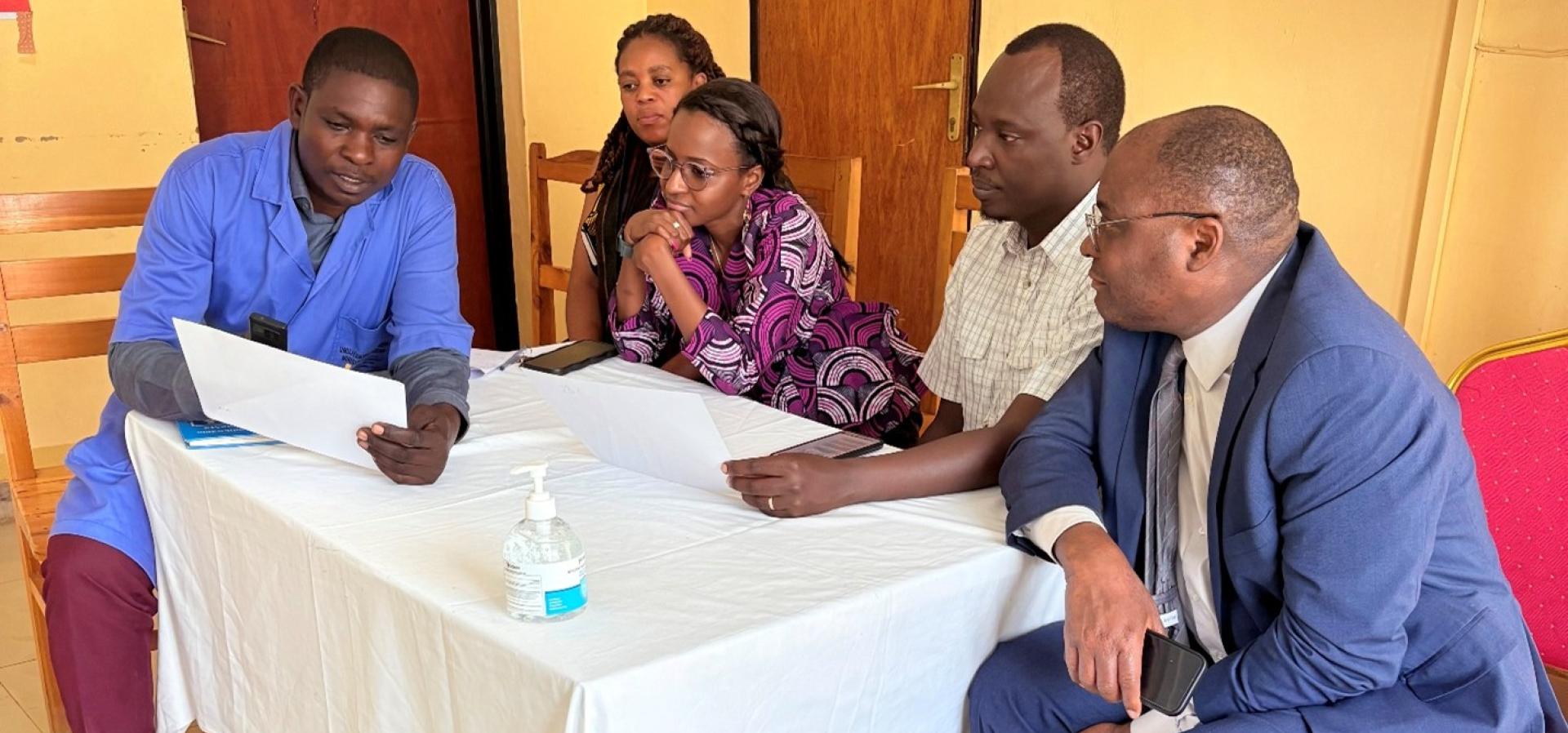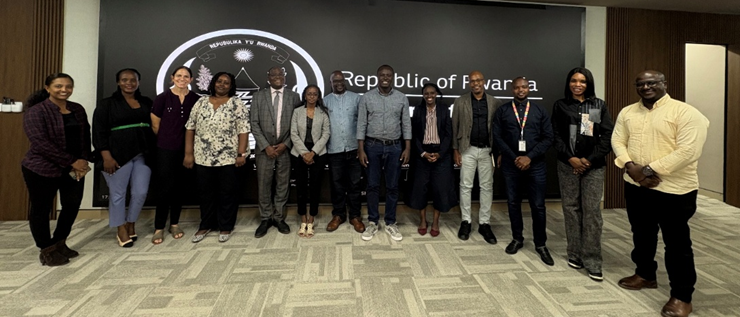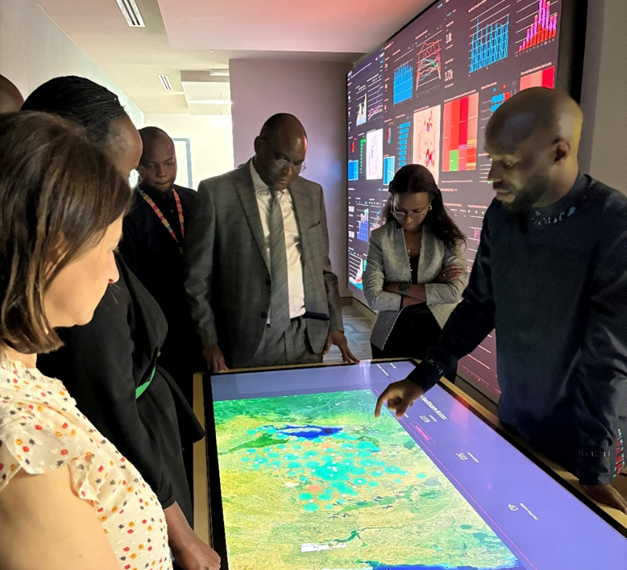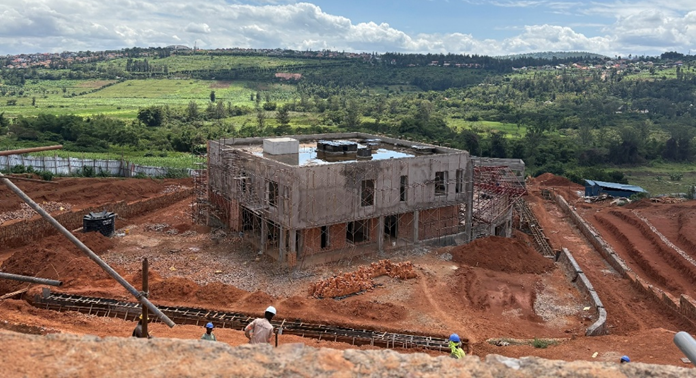
Impact Story | September 3, 2025
Receiving a diagnosis of Marburg hemorrhagic disease can be a death sentence, with a case fatality rate as high as 88 percent. But Rwanda bucked that outcome in its Marburg outbreak response, achieving the lowest fatality rate ever recorded, thanks to swift action by the Government of Rwanda and timely support from the Pandemic Fund and other partners.
The rapid response unfolded amid multiple public health threats. While Rwanda was still managing an active mpox outbreak, the emergency preparedness and response manager described Marburg as the “cousin of Ebola” on September 26, 2024; a warning of what was to come. The Marburg outbreak was officially declared the following day.
Soon after mpox was declared as a public health emergency in August 2024, the Pandemic Fund Governing Board fast-tracked the allocation of US$129 million for five (5) projects covering 10 affected countries in Africa. This included fast-tracking the project on “Strengthening Pandemic Prevention & Response Through One Health Approach”, submitted by Rwanda to the Pandemic Fund.
The US$24.9 million Pandemic Fund grant awarded to Rwanda for this project catalyzed an additional US$154 million in co-investment (through an IDA credit for health that the country had received earlier) and US$5.8 million in co-financing from international partners -- the Asian Infrastructure Investment Bank, Food and Agriculture Organization of the United Nations, UNICEF, and WHO – all serving as Implementing Entities for the project.
The project focuses on strengthening disease surveillance and early warning systems with upgraded technology and AI, improving laboratory capacity through better equipment and quality management, and building a skilled workforce via targeted training. Leveraging the Pandemic Fund’s disease-agnostic approach, this three-year project adjusted its activities in its first year to combat mpox, then adapted them to tackle the Marburg outbreak while sustaining Mpox surveillance and response.
With this support, Rwanda made substantial strides across disease surveillance, laboratory networks, and health workforce.
Prioritizing every life at risk, the country also effectively contained the deadly Marburg outbreak, reducing the fatality rate to 22.7 percent with 15 deaths, declaring the end of the outbreak in less than three months.
“The Pandemic Fund was glad to be able to support Rwanda’s swift and effective response to the recent Mpox and Marburg outbreaks,” said Pandemic Fund Executive Head Priya Basu. “Rwanda’s leadership in making timely investments to tackle these urgent health threats has not only protected its own communities but also contributed to regional and global health security. These investments have laid the foundation for stronger preparedness and resilience against future pandemics.”
Key to this success were measures to enhance contact tracing, expand testing, the timely deployment of countermeasures, and full community adherence. These efforts were enabled by the Government’s leadership and Pandemic Fund support that catalyzed external financing and domestic resources and promoted collaboration across sectors.
“This experience underscores that only through a unified, multisectoral response can we effectively manage zoonotic threats and safeguard global health security," said Dr. Richard Muvunyi, head of wildlife health and research coordinator at the Rwanda Development Board.

Enhancing laboratory capacities along with comprehensive workforce training was instrumental in containing the Marburg outbreak, according to Dr. Edson Rwagasore, division manager at the Rwanda Biomedical Centre and coordinator of the Pandemic Fund project. Building laboratory capacity enabled timely confirmation of Marburg and mpox through the procurement of nearly 19,000 pieces of equipment, including testing and sequencing kits. This equipment was extended to 16 antimicrobial resistance (AMR) sentinel sites and National Centers of Excellence.
Data-driven Surveillance, Preparedness, and Response
As part of a broader government-led effort supported by partners, including the Pandemic Fund, Rwanda launched the Health Intelligence Center in April 2025. This initiative contributes to the digitalization of all health facilities across the country. The Health Intelligence center leverages data from all levels of the health system to enable real-time surveillance and evidence-based decision making - strengthening Rwanda’s capacity to respond to public health threats and improve service delivery. Another early success of the project was an innovative surveillance method, which scaled up an mpox artificial intelligence (AI) tool at various entry points, using skin images for efficient mpox detection and reporting. The project also has finalized both a national One Health surveillance system and second National Action Plan on AMR, establishing a strategic framework to effectively combat AMR threats.
The launch of Rwanda’s Health Intelligence Center, with support from the Pandemic Fund and other partners, is a groundbreaking advancement for data-driven health care,” said Rwanda’s Minister of Health and Pandemic Fund Governing Board Co-Chair Dr. Sabin Nsanzimana. "This initiative allows us to leverage real-time data and AI for disease surveillance, efficient resource allocation, and smart policymaking to transform our health systems.

Strengthening Workforce Readiness
Workforce development significantly bolstered the project’s success. Thirty-three rapid response teams and more than 2,500 health workers were trained on mpox and Marburg and were deployed to high-risk districts. Mentorship and supervision were provided in all districts. Additionally, 205 laboratory staff received training on sample management and 60 veterinarians were educated about AMR. The project also supported training of trainers for 50 community animal health workers, ensuring a comprehensive and lasting approach to health and safety.
"When mpox was confirmed in Rwanda, it was a scary time,” said Muco, a laboratory scientist and one of the mpox surge staff. “It was a new disease and [...] the rash looked painful, terrifying, and highly contagious. People were really afraid, and even we - in the laboratory didn’t know what to expect.”
“The training we received made all the difference for me,” he added. “We were taught exactly which samples to collect, how to handle them safely with triple packaging technique, how to store samples under the right conditions and how to transport them without putting anyone at risk. For the first time, I felt fully prepared. Now, I work with confidence and without fear. I know I'm helping protect my community, and that makes me proud.”
Mobilizing Community Engagement
Community engagement, integrated into over 90 percent of Pandemic Fund projects, was vital in effectively containing the Marburg outbreak and enhancing mpox surveillance in Rwanda. Through collaboration among 462 faith-based organizations and community leaders (—nearly half women) and 12,000 young people—used risk communication, community engagement strategies, and psychological support to reach over 1.4 million people, educating them about the diseases and how to protect themselves.
At the Mayange Health Center in Nyamata, near Kigali, 140 community health workers serve 55,000 people using the Impuruza digital event-based surveillance system, with the support of the Pandemic Fund project.
"I am proud of this work and honored by my community's trust,” said Mrs. Mukamusoni, a community health worker in Nyamata and a mother of five. “I believe being well-equipped with knowledge adds value in protecting my people."
Looking ahead

Rwanda applied lessons from Marburg to recommend the establishment of a fever clinic at the Mining Site, the outbreak's origin. The fever clinic now screens and monitors the health of approximately 1,000 mine workers, ensuring timely data sharing with the surveillance center.
With Marburg contained, efforts have pivoted towards preparedness, featuring state-of-the-art infrastructure and a ready-to-go workforce. This includes the ongoing construction of additional Centers of Excellence for outbreak management, set to launch in December 2025, funded by co-investment from the catalytic effect of the Pandemic Fund grant. The project is also supporting training of nurses, and addressing the loss of frontline workers in intensive care units from Marburg, demonstrating the project's commitment to developing a resilient system that safeguards frontline workers and communities against any outbreak in the future.
Last Updated: November 24, 2025

